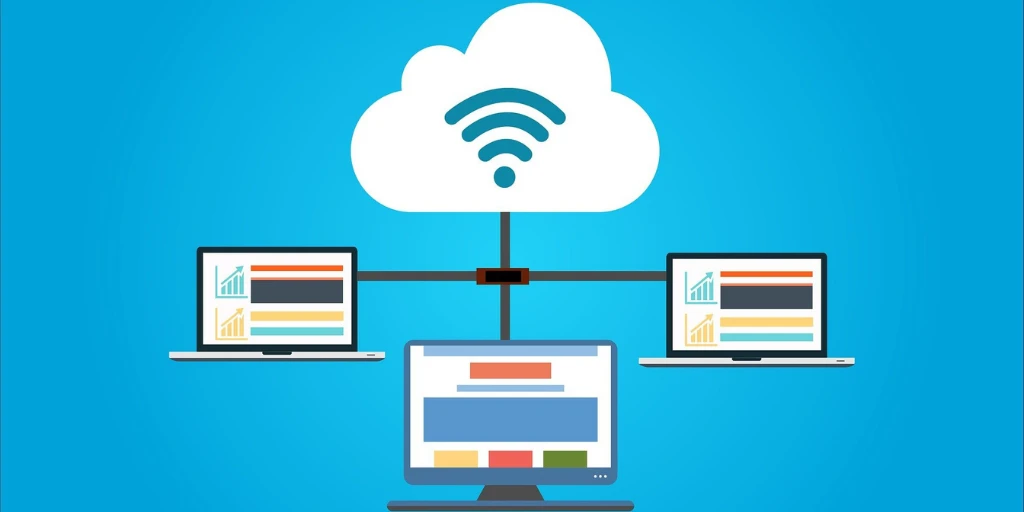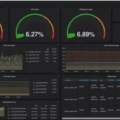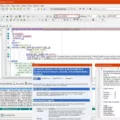Do you want to ensure your server is running at optimal performance? Server performance is essential for businesses to ensure smooth operations. Here, we discuss some of the most important factors that affect server performance, and how you can use them to optimize your server’s performance.
First, let’s talk about CPU usage. It’s important to keep an eye on the number of CPU resources being used by applications and processes running on your server. If CPU usage is too high for too long, it can cause slowdowns or even crashes. You should monitor your CPU usage in order to identify any potential issues and take corrective action.
Next up is disk I/O. This measures the amount of input/output (I/O) operations being performed by your server’s hard drive. Database I/O, as well as before-image and after-image I/O, should all be monitored carefully. High amounts of disk I/O can cause bottlenecks in other areas of the system, resulting in slowdowns and decreased performance.
You should also monitor record locking in order to prevent any conflicts between different processes accessing the same data at once. This could result in data corruption or even crashes if not monitored properly.
Memory usage is another critical factor when it comes to optimizing your server’s performance. If memory usage becomes too high for too long, it can lead to increased page faults which will result in slowdowns or crashes if not addressed quickly enough.
Database and index fragmentation are also important considerations when trying to optimize your server’s performance. Fragmentation occurs when data becomes scattered across different parts of a hard drive or database table, causing slower retrieval times and decreased performance overall. You may need to defragment your databases regularly in order to keep them running efficiently.
Finally, website caching is another key factor that affects server performance. Caching allows commonly requested webpages, images, etc., to be stored locally on each user’s computer rather than having to load them from a remote server each time they are requested – reducing latency and improving response times significantly for users who access these resources often.
These are just some of the most important factors that affect server performance – but if you keep an eye on them regularly and take corrective action when needed, you can ensure that your servers continue running optimally over time!

Checking Server Performance
To check server performance, you can use a variety of methods. First, you should establish a baseline for your server’s performance to compare against as your server runs. This will give you an idea of how your server should be performing at its best. You can then track key metrics such as CPU usage, memory usage, disk I/O, and network usage to make sure they are all within acceptable levels. Additionally, effective monitoring tools like Nagios or PRTG can help you keep an eye on your server’s performance. These tools can provide regular updates on your server’s performance and allow you to set up notifications and reports for when something is wrong with the system. Finally, make sure to monitor consistently so that if there are any issues with the server, they can be identified quickly and remedied before they become a major problem.
Improving Server Performance
Improving server performance begins with understanding what affects it. There are a number of factors that can lead to a slower server, including inadequate memory, limited bandwidth, an inefficient operating system, and unoptimized software. Here are some tips for improving your server performance:
1. Upgrade Your Hardware: Invest in more powerful and modern hardware components to ensure faster performance. This includes upgrading your RAM and hard drive space, as well as replacing outdated components like processors and motherboards.
2. Optimize Your Operating System: Make sure your operating system is up-to-date and optimized for maximum performance. This may involve removing unnecessary applications or programs that are running in the background and disabling certain features like automatic updates.
3. Use Caching Techniques: Caching helps reduce the load on your server by storing frequently accessed data so it can be quickly retrieved from memory instead of from disk or other sources. Implementing a caching solution can drastically improve server performance.
4. Increase Network Bandwidth: If bandwidth is restricted or insufficient, it can cause slow loading times and other issues with data transfer speeds on your server. You should consider increasing your bandwidth capacity or investing in faster network hardware to improve performance.
5. Optimize Your Website Code: Improperly written code can cause bottlenecks in your website’s loading times, so make sure you optimize all of your HTML, CSS, JavaScript, and other code for maximum efficiency when loading webpages on the server side. This includes combining multiple files into one file whenever possible to reduce HTTP requests from the browser to the server side.
6. Monitor Server Usage: Keeping an eye on how much CPU or RAM usage is taking place at any given time will help you identify any potential problems that could be slowing down the server’s performance. Regular monitoring of resource usage will also help you plan ahead if additional resources are needed in order to keep everything running smoothly over time.
Understanding Server Performance Management
Server performance management is the process of monitoring server infrastructure and its resources to ensure that it is performing optimally. It involves tracking and analyzing key metrics such as uptime, response time, memory usage, disk space, and processor utilization among other system components. By identifying areas of improvement and making tweaks to the system, server performance can be improved. The goal of server performance management is to identify any potential issues before they become more serious problems that could affect the entire system. Additionally, server performance management can help to identify areas where an upgrade may be necessary in order to support a larger user base or more complex applications. Finally, effective server performance management can also help to reduce costs associated with maintenance and repairs.
Factors Impacting Server Performance
Server performance is affected by a variety of factors, including CPU usage, disk I/O, record locking, memory usage, and database and index fragmentation.
CPU usage can have an impact on server performance as it determines the amount of computing power available to the system. Higher CPU usage can lead to slower response times and poorer performance.
Disk I/O is another factor that has an effect on server performance. This includes database I/O (reading and writing data from the database), before-image I/O (reading and writing data from the before-image storage location), and after-image I/O (reading and writing data from the after-image storage location). Poor disk I/O can lead to a decrease in performance due to slower read/write speeds.
Record locking is another factor that affects server performance. Record locking occurs when multiple users attempt to access or modify the same record at the same time. If these requests cannot be processed simultaneously, then one user will have to wait for the other user to finish before their request can be processed, leading to a decrease in performance.
Memory usage also affects server performance as it determines how much data can be stored in RAM at any given time. If too much memory is being used then it could lead to longer response times as requests are processed more slowly due to a lack of available resources.
Finally, database and index fragmentation can affect server performance due to fragmented records having an increased number of read operations required in order to retrieve data from them. This leads to slower query execution times and decreased overall system performance.
Checking Server Slowness
Checking server slowness can be done in a few different ways. First, you should check the server logs to identify any errors or slowdowns that may be occurring. You can also use tools such as ping and traceroute to measure the latency of your connection and identify any bottlenecks in the network. Additionally, you can use a website speed testing tool such as webpagetest.org to measure how quickly your website is loading from different locations around the world. Finally, if your hosting provider has access to server monitoring tools, you can ask them for details about the performance of your server and any potential causes of slowness.
Testing Windows Server Performance
Testing Windows Server performance is an important step in ensuring that your server is running at optimal levels. There are a few different ways to test Windows Server performance:
1. Use Windows Performance Monitor (Perfmon) – Perfmon is a built-in Windows tool that can be used to monitor and analyze the performance of servers, applications, and services. You can use Perfmon to track various system resources such as CPU utilization, memory usage, network usage, disk I/O, and more.
2. Use the Resource Monitor – The Resource Monitor is another built-in Windows tool that provides real-time information about how your system resources are being utilized. It also allows you to view active processes and services running on your server and details about their resource usage.
3. Use Third-Party Tools – There are also several third-party tools available for testing Windows Server performance such as SolarWinds Server & Application Monitor (SAM), PRTG Network Monitor, Dynatrace AppMon, etc. These tools provide more detailed insights into server performance by monitoring key metrics like application response time, database queries per second, etc., in addition to tracking core system resources like CPU utilization and memory usage.
By using these methods you can get an overview of how well your server is performing and take appropriate steps to improve it if needed.
Understanding Server Performance
Server performance is a measure of how well your server can handle the requests it receives. It is often measured as the amount of time it takes for a server to respond to a request, or how efficiently it can process and deliver data. Server performance also includes uptime, security, stability, load balancing, and scalability. It is important to monitor server performance in order to ensure that your server can handle any sudden changes in demand or spikes in usage. By monitoring the metrics related to your server’s performance, you can quickly identify any potential issues that may arise and take preventive measures to prevent them from occurring.
Improving Server Performance Through Tools
Dynatrace is a comprehensive server performance monitoring tool that can help you improve the performance and reliability of your servers. It can monitor server metrics, such as CPU, memory, and disk utilization, as well as server logs. Dynatrace also provides insights into application performance, infrastructure utilization, and more. It provides in-depth visibility into the performance of any application hosted on your servers, with real-time alerting if any issues are detected. With Dynatrace’s automated root cause analysis capabilities and its ability to proactively detect potential problems before they occur, it should meet all of your server performance monitoring needs.
Benefits of Using a Server Management Tool
A server management tool is a software application used to manage and maintain servers, allowing for maximum performance. It can provide features like monitoring and diagnostics, system administration, security, backup, patching, and other important server-related tasks. These tools help to automate many of the manual processes involved in server maintenance and management. They also provide information regarding the health of servers so administrators can address any issues before they become larger problems. Server management tools are essential for keeping servers running smoothly and efficiently, as well as reducing downtime and increasing productivity.
Conclusion
In conclusion, server performance is a critical aspect of any successful business. To ensure that your server runs optimally, it is important to establish a baseline of performance, track key metrics, use effective monitoring tools, monitor consistently, and set up notifications and reports. Additionally, be sure to employ website caching, virtualization, database optimization, content delivery network usage, and optimization of image sizing to maximize server performance. By taking these steps and continually monitoring the performance of your server, you can ensure that your business operations remain efficient and profitable.













